Like most of the year so far, August has been warm and dry with 19C/66F mean temperature. It’d the second warmest August I’ve recorded, after 2003 which was exceptional. That’s now history but the legacy is dry soil: we have watered from one tap, to keep plants in production.
HOWEVER the weather looks like it’s changing big time – maybe a wet autumn. Just in time for my open day next Sunday 4th! We shall be selling my new No Dig book and also the 2023 calendar, which has not arrived yet (30th) but should be here by then.
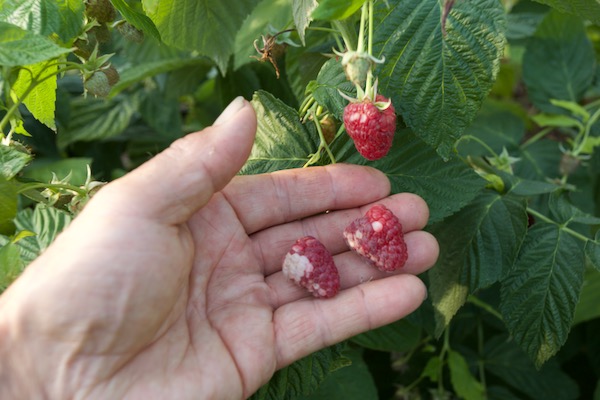
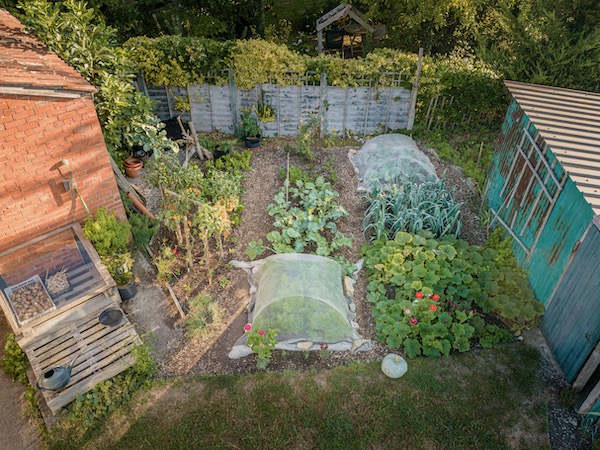
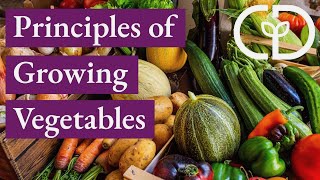
Tomatoes
Do you remember last August? Much of north-west Europe was afflicted by late blight on tomatoes, because of a cold and damp summer with almost no sunshine!
Contrast that with this year. Anybody starting out in 2022, growing outdoor tomatoes in the UK for the first time will be thinking it’s so easy. The summer has been exceptional because tomatoes thrive in dry air and sunshine, plus with water for their roots.


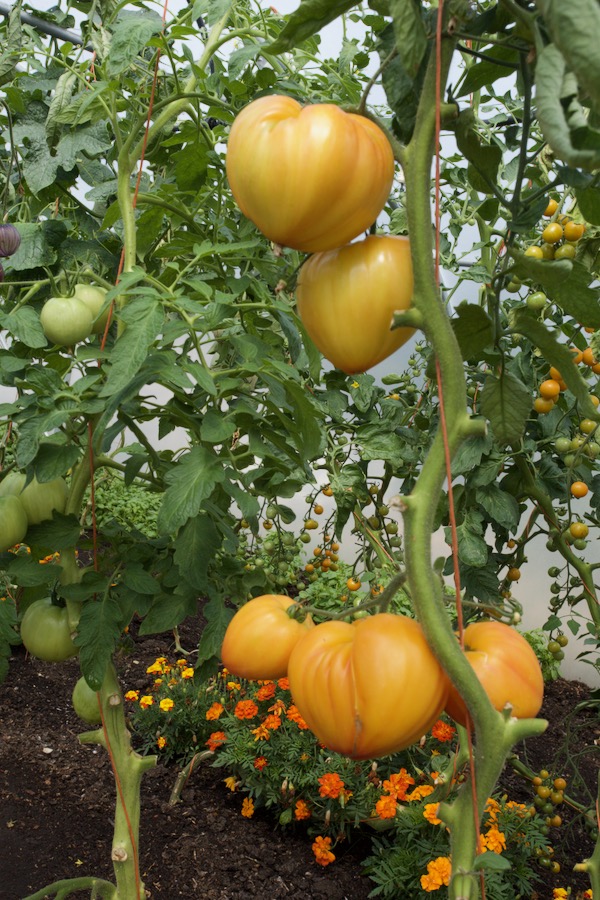
Interplants
This method highlights the best of No Dig and I use it as much as I can. It still amazes me how I can put little seedlings between strongly growing and almost mature plants, and the new little seedlings grow so well.
I was brought up with the belief in competition! Turns out it’s cooperation.
I’m sure the mycorrhizal network is working here, with parent or ‘nurse’ plants helping the new ones. I hope the photographs convey a bit of this. Notice that often we are putting plants in very small and I think that helps.
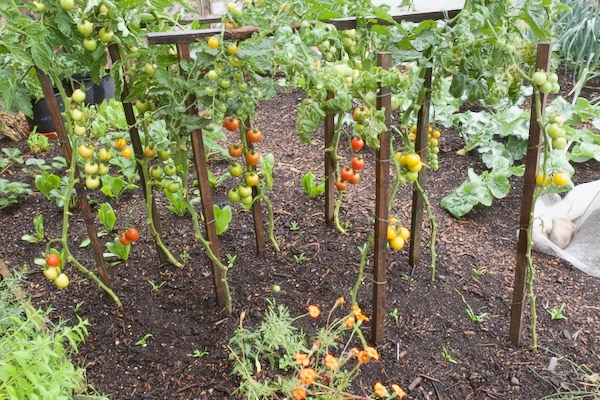


Lettuce root aphid
Through August, these are a salad grower’s nightmare, and this year they’re worse than usual from the dry conditions. It’s not infrequently that one can go out to tend the plants, say pick them, and since 12 to 18 hours ago they’ve gone from looking healthy to being almost totally collapsed.
Mostly this is in dry Augusts, and watering is the best remedy. We are watering most lettuce every day, because of the lack of rain. It’s worth it for me because they are my highest value crop, but also I grow endive and chicory because those plants do not suffer the root aphid.


Other insects
Brassica vegetables have suffered this August from high populations of butterflies, moths and flea beetles. The latter have surprised me because normally they are worst in spring and early summer.
I’m finding that if plants have enough moisture at the roots, even not a huge amount, that can ensure their survival. It will now be a much easier autumn with few flea beetles because they start to hibernate. Against the caterpillars we are spraying every 18 days with Bacillus thuringiensis. Buy this one which is the same soil bacteria, only it’s used principally for box hedging

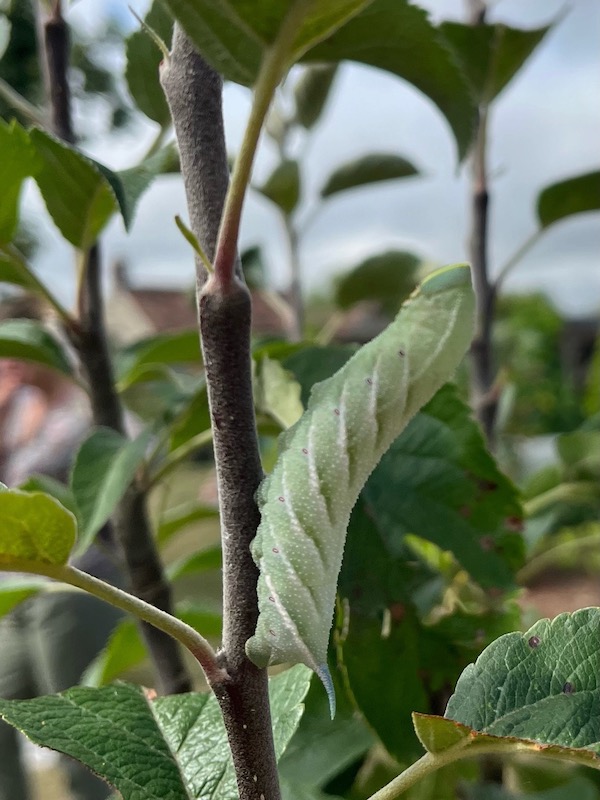
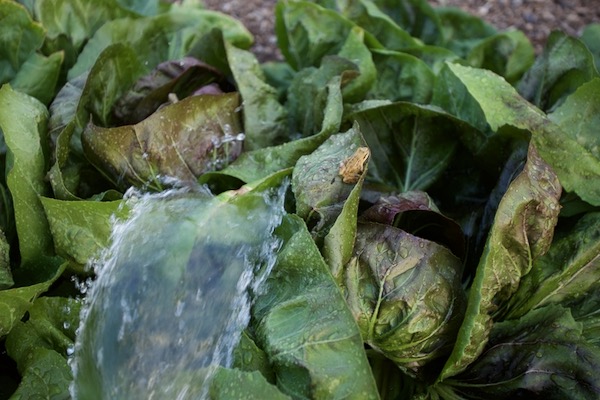
More plants to raise!
September is a key month for sowing and multisowing leafy plants, to do one of two things.
- Either they will over-winter as small plants, but with strong root systems which give rapid growth by early spring – for harvest when you will be so grateful for that early growth. I warmly recommend you look at this video which we filmed last December, to gain an idea of what these plants can look like by early winter.
- Or they give you salads to harvest from November though to April, depending on your climate and on winter weather. They are frost hardy plants and best harvests come from growing them undercover, but with no need for heating.
The list of what you can sow is long and I suggest a quick visit to my sowing timeline for September. For extensive details about propagation, we created a playlist on YouTube.
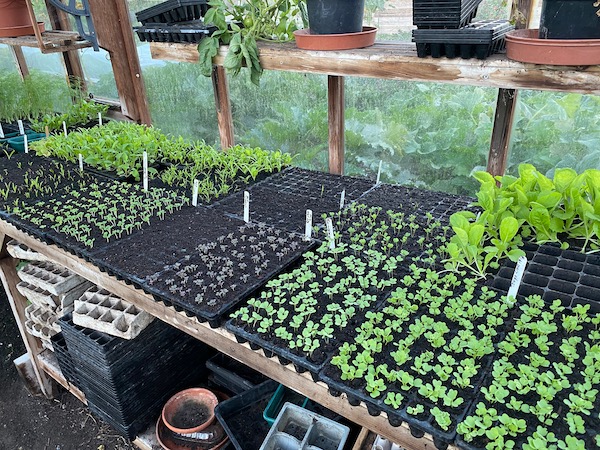
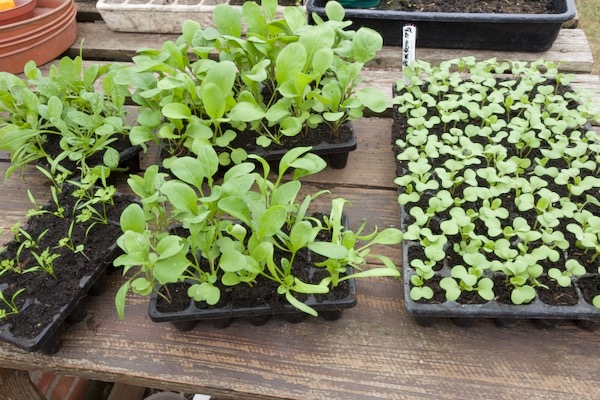
Transplanting
I love how one can pop little seedlings in the ground, so quickly and easily after dibbing (see my dibber here), water them a bit and then growth is rapid at this time of year. In the dry conditions of August it has actually worked a lot better than transplanting larger seedlings. However every garden is different and I’m just showing you that possibility, which may be less successful if you have high populations of slugs and snails.
This is one of the many things I explain in my new book, which we are selling on offer with the 2023 Calendar.
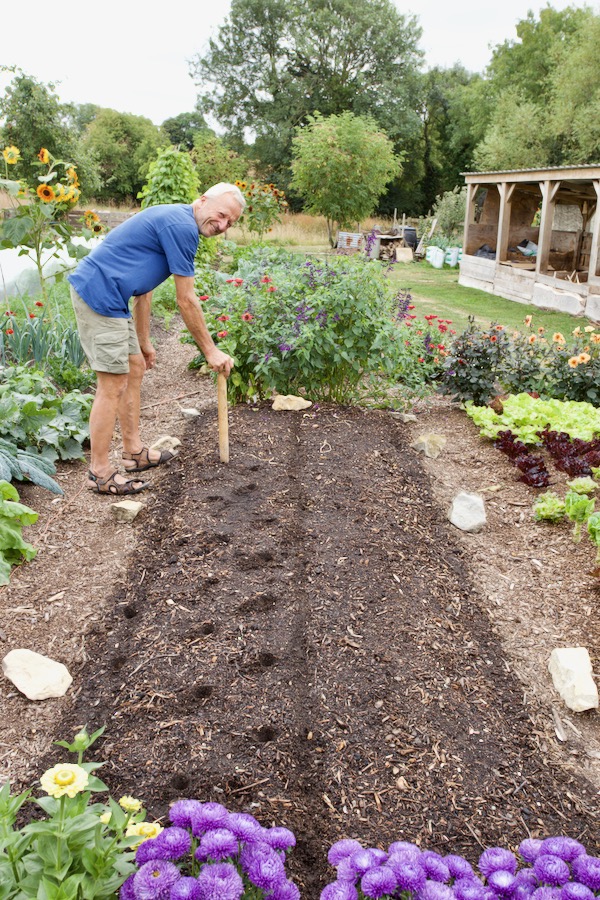


Seed saving
The dry summer has resulted in high quality seed. In July we gathered pea and broad beans, recently we harvested carrot, spinach and chard seed, and this week shall cut the onion stalks to bring the heads under cover before it rains too much. The seed is not totally dry but definitely dry enough to harvest and finish undercover, which is so much more reliable. More details in this video.
If you have lettuce outdoors for seed, that also may be worth harvesting before it rains a lot. I actually lost all of my outdoor lettuce seed to finches, who had quite a feast! Almost overnight as well.
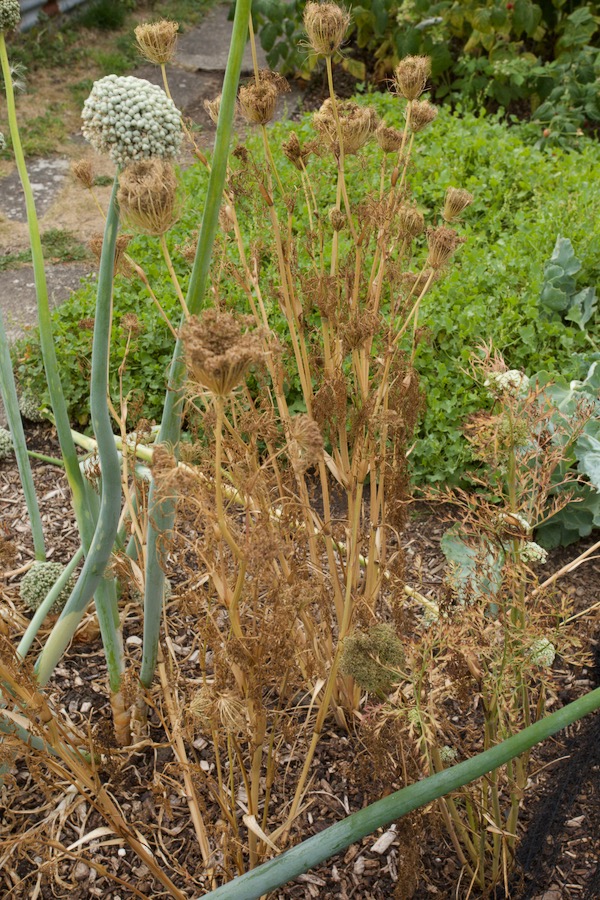
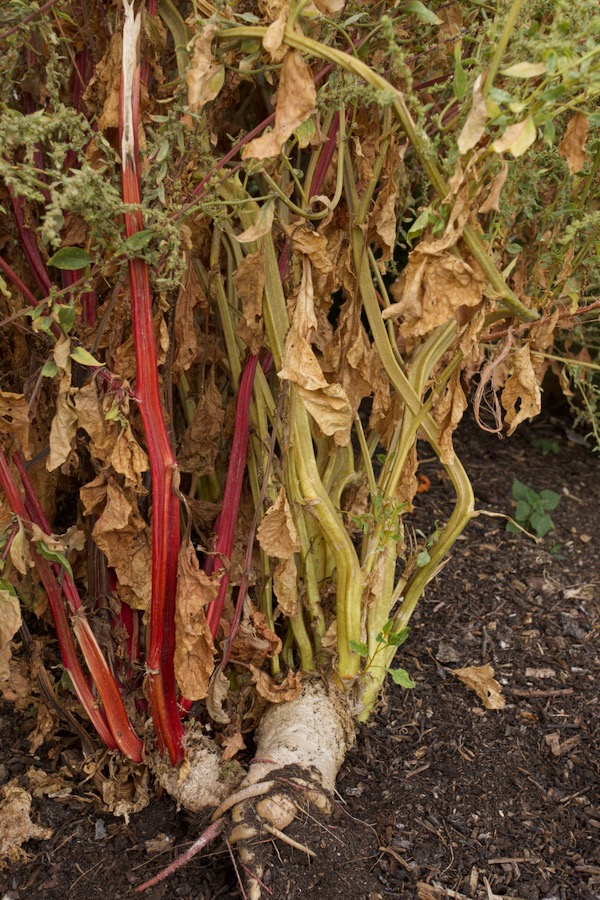
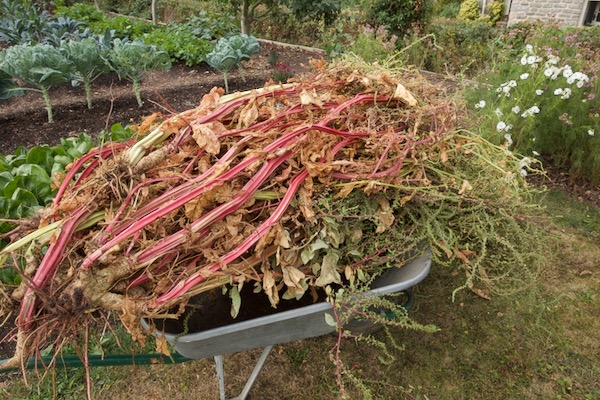
Compost making
There are so many ways to succeed with this and I hope your results are encouraging, see our page of advice. Please don’t worry if your home-made compost does not look perfect. It can be quite lumpy and with bits of wood still visible, and that is good to spread without sieving or sifting.
Compost is food for soil life, it’s not ‘fertiliser’. The nutrients are not water soluble and you can spread it any time in the coming autumn for example. This video shows my results with a plastic Dalek of 330 L size. You could run a good composting operation with two such containers.
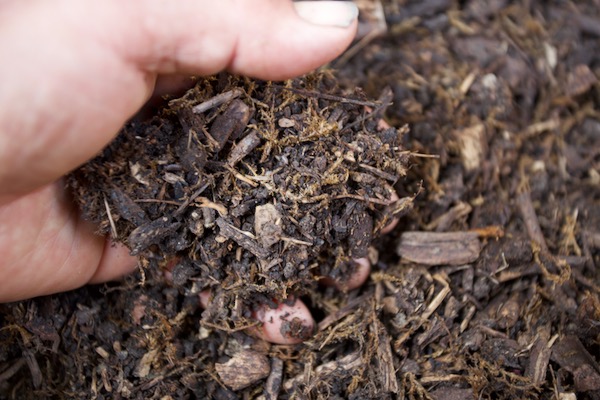
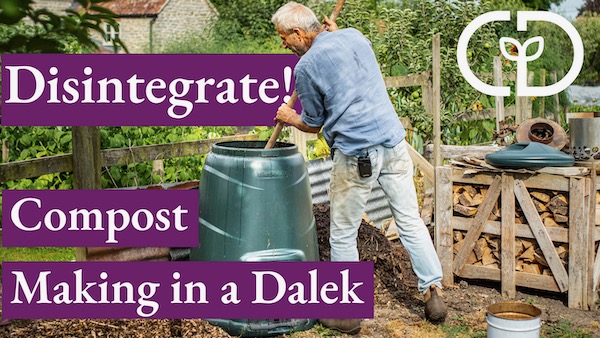
Melons
As the weather cools down, melons ripen more slowly and I hope that yours are at least fully grown because in September, they taste less sweet unless well developed by now.
There’s also a question of how much powdery mildew has developed on the leaves because this reduces photosynthesis, and makes them taste less amazing! It’s not an easy disease to control and I find that some varieties such as the Ogen below, resist mildew better than others. I shall publish more details later and there will be a video on YouTube.
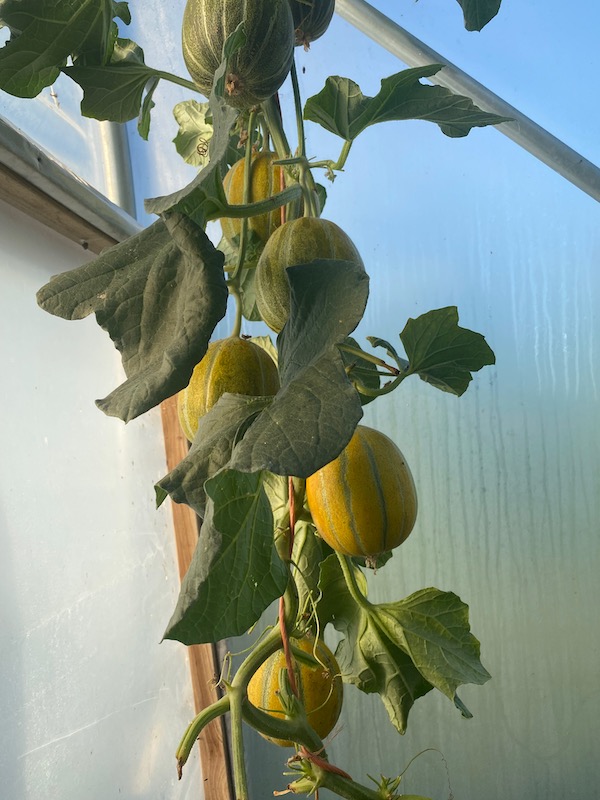


Growing rye for bread, all by hand
I have long had a passion for making tasty and nutritious bread.
39 years ago I bought an electric stone mill and it’s still going. Last October I decided to have a go at growing rye for grain and one bed 5 m long gave 2.8 kg, enough for six of my heavy loaves.
This is not economic in terms of time, but has been fun to do and I want to develop my methods for next year. We shall publish a video about it during the winter.
Photo left by Heidi who wrote and sung this beautiful song, photo right by Briony Plant.
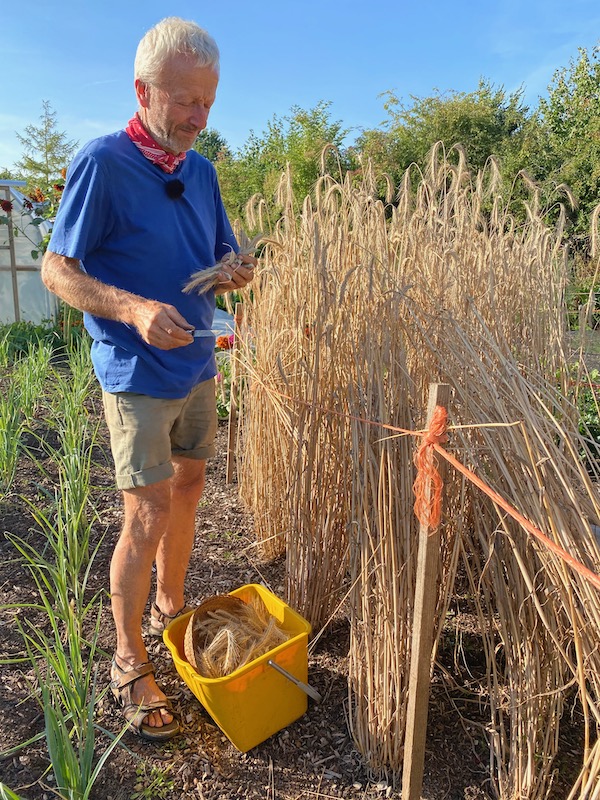
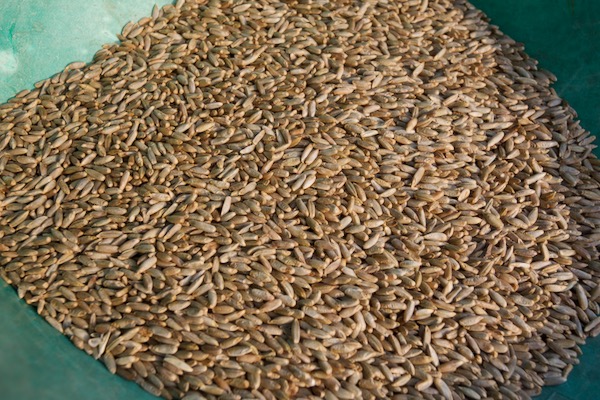
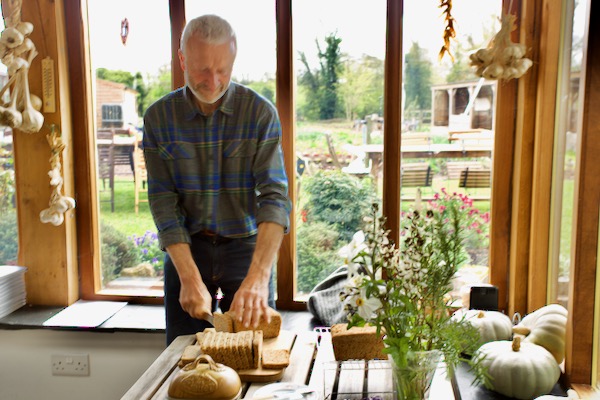
Polytunnel summer
To finish, some lovely views of summer vegetables, in late August.
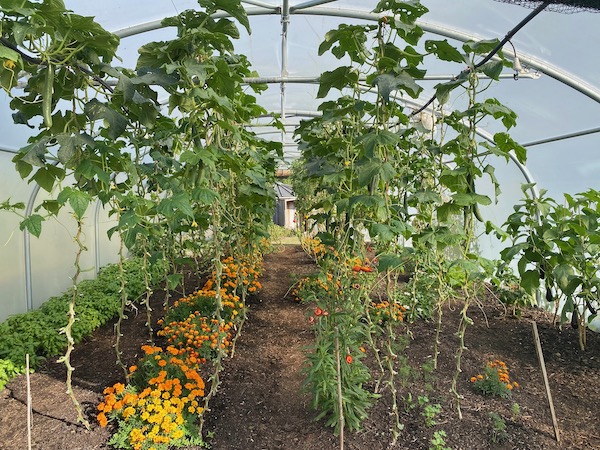

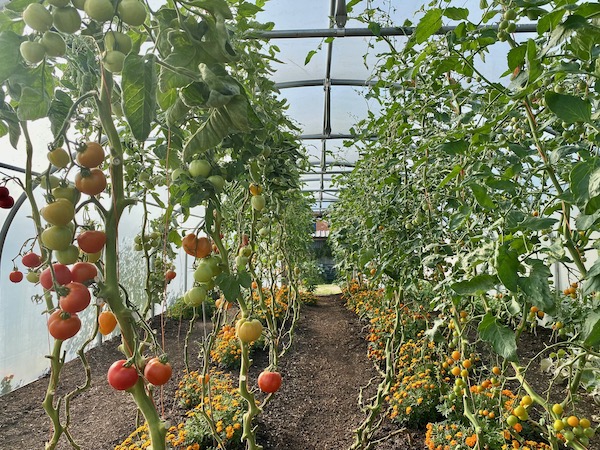









































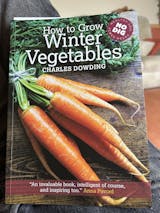


0 comments